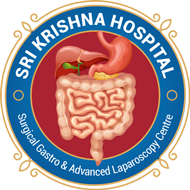What is Hemorrhoidectomy?
A hemorrhoidectomy is used for large external hemorrhoids and internal hemorrhoids that have prolapsed or are causing problems and not responding to nonsurgical management.
Why Hemorrhoidectomy is done?
Hemorrhoidectomy is appropriate when you have:
- Very large internal hemorrhoids.
- Internal hemorrhoids that still cause symptoms after nonsurgical treatment.
- Large external hemorrhoids that cause significant discomfort and make it difficult to keep the anal area clean.
- Both internal and external hemorrhoids.
- Had other treatments for hemorrhoids (such as rubber band ligation) that have failed.
How Hemorrhoidectomyis done ?
Hemorrhoidectomy is surgery to remove hemorrhoids. You will be given general anesthesia or spinal anesthesia so that you will not feel pain.Incisions are made in the tissue around the hemorrhoid. The swollen vein inside the hemorrhoid is tied off to prevent bleeding, and the hemorrhoid is removed. The surgical area may be sewn closed or left open. Medicated gauze covers the wound.Surgery can be done with a knife (scalpel), a tool that uses electricity (cautery pencil), or a laser.The operation is usually done in a surgery center. You will most likely go home the same day (outpatient).There is a procedure that uses a circular stapling device to removehemorrhoidal tissue and close the wound. No incision is made. In this procedure, the hemorrhoid is lifted and then "stapled" back into place in the anal canal. This surgery is called stapledhemorrhoidopexy. People who have stapled surgery may have less pain after surgery than people who have the traditional hemorrhoid surgery. But the stapled surgery is more expensive. And people who have stapled surgery are more likely to have hemorrhoids come back and need surgery again. Doppler-guided hemorrhoidectomy is a procedure that uses a scope with a special probe to locate the hemorrhoidal arteries so that less tissue is removed.
Post operative recovery
- You can expect some pain after surgery
- Some bleeding is normal, especially with the first bowel movement after surgery.
- For a few days after surgery, drink liquids and eat a bland diet (plain rice, bananas, dry toast or crackers, applesauce). Then you can return to regular foods and gradually increase the amount of fiberin diet.
- You may apply numbing medicines before and after bowel movements to relieve pain.
- Ice packs applied to the anal area may reduce swelling and pain.
- Frequent soaks in warm water (sitz baths) help relieve pain and muscle spasms.
- Some may recommend that you take an antibiotic (such as metronidazole) after surgery to prevent infection and reduce pain.
- Doctors recommend that you take stool softeners that contain fiber to help make your bowel movements smooth. Straining during bowel movements can cause hemorrhoids to come back.
- Follow-up exams with the surgeon usually are done 2 to 3 weeks after surgery to check for problems.
Advantages of Hemorrhoidectomy
Surgery usually cures a hemorrhoid. But the long-term success of hemorrhoid surgery depends a lot on how well you are able to change your daily bowel habits to avoid constipation and straining. About 5 out of 100 people have hemorrhoids come back after surgery.





